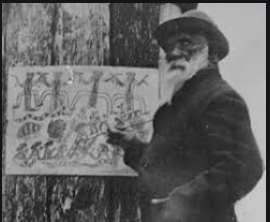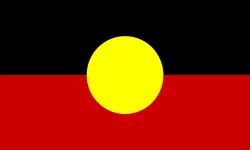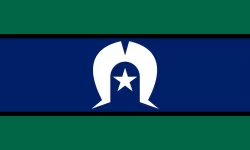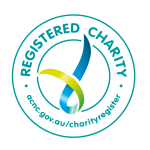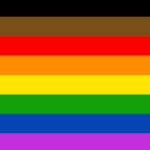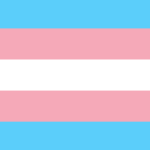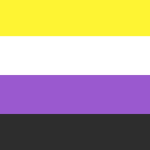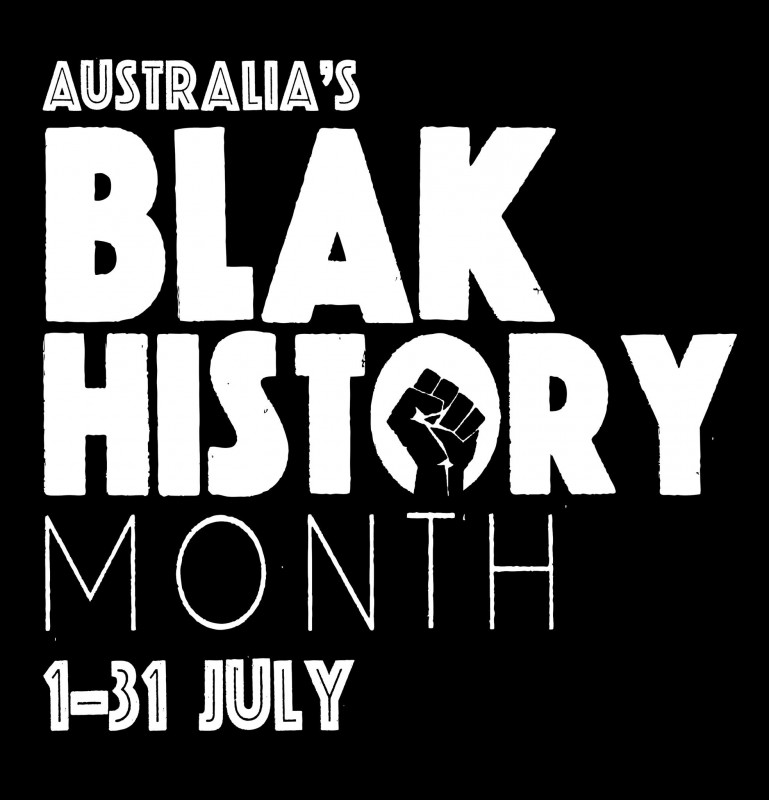
The Month of July marks a significant time of year for the Aboriginal and Torres Strait Islander communities.
Throughout July we will post stories reflecting historical events, highlighting advocates, and bringing light to incredible achievements of Aboriginal and Torres Strait people.
You can also access profiles on warriors past and present, who have built a lasting legacy for those to come at www.blakhistorymonth.com
Uncle Lyall Dennison – by Paulette Whitton
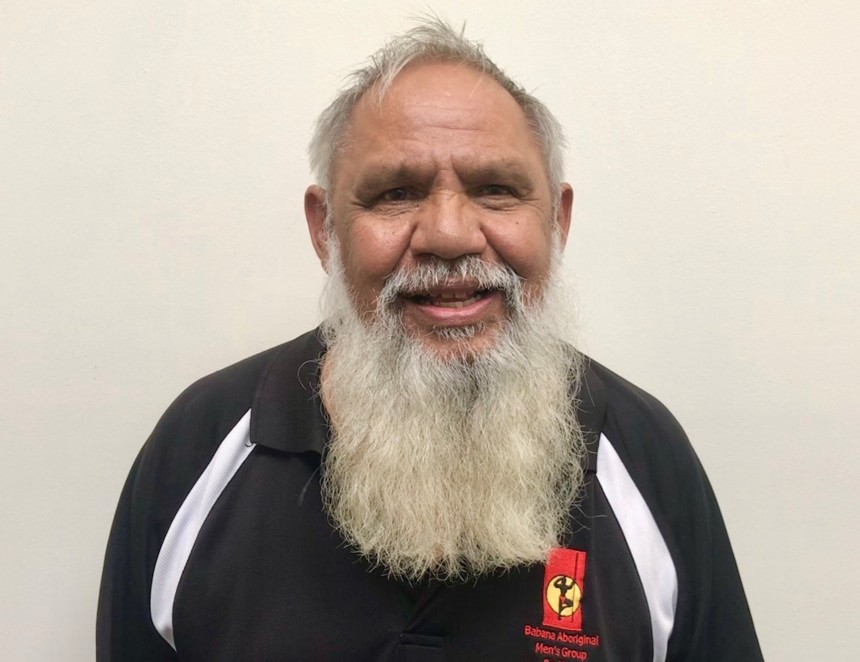
Uncle Lyall Dennison is a Kamilaroi man who was born in Moree and raised on a mission.
In 1965 Uncle Lyall was a child of around ten years old when he witnessed Aboriginal politics in action. Aboriginal man, leader and activist Charlie Perkins arrived in Moree with a bus load of Sydney students on the Freedom Ride. Uncle Lyall was there and saw the intense protest unfold when the Freedom Riders took on the Moree Baths and Pool which had a history of racial discrimination that banned Aboriginal people from entering.
As he grew older Uncle Lyall was inspired by people like fellow Komeroi activists Uncle Lyall Munro Snr and Billy Craigie who were passionately standing up for Land Rights and freedoms for Aboriginal peoples. However, Uncle Lyall remembers his dad tried to steer him away from associating with the radical leaders saying “what do you wanna be involved with them for they’ll only get you into trouble”. His dad was a survivor of Kinchela Boys Home (KBH) and was used to being told what to do.
Activism became a natural part of Uncle Lyall’s life. He remembers going to his first protest in the 1970s when he was working on the Moree Council. Uncle Lyall said he could see the racism with Aboriginal people at the Council mostly employed only as labourers. “I told work I was sick and attended the Sydney protest on the train. There was lots of media there when we arrived and only a carriage full of us. The bosses saw me on the footage and said you wasn’t sick but everyone backed me up and said yes he was he had the gastric. He sat by the toilet all the way on the train. So I got out of that!” Uncle Lyall laughs.
The last protest he remembers attending was Corroboree 2000 when thousands of people walked across the Sydney Harbour Bridge for reconciliation. “I would have attended the Black Lives Matter protest this year too had it not been for COVID but I supported from home,“ Uncle Lyall said.
Uncle Lyall also tried to make change for his peoples by working inside the systems. While he is now retired from the NSW public service, Uncle Lyall spent his working life on projects involving Aboriginal communities throughout NSW such as drug/alcohol and housing programmes; anti-discrimination and employment in police/corrective services and community services. One of his final roles was with the NSW Aboriginal Trust Fund Repayment Scheme that saw some of the monies returned to Aboriginal peoples who had their work earnings taken from them in a campaign that became known as Stolen Wages.
In May 2017, Uncle Lyall commenced as Cultural Advisor to the Board of annecto and also made a deadly contribution to the cultural awareness training that annecto staff have undergone. “I’ve worked with a lot of Aboriginal communities and it’s important to know the right people to tap into. I’ve done a lot of work in NSW and the Kempsey area, and I can bring my experience to help support annecto, and especially annecto’s Aboriginal workers”, Uncle Lyall remarked. The role changed in 2019 to become an annecto ambassador. Along with supporting annecto in his retirement years, Uncle Lyall is also a board member of Babana Aboriginal Men’s Group and Wyanga Aboriginal Aged Care Service, and in 2016 he was an ambassador for New South Wales Seniors Week.
Yorta Yorta Elder Aunty Pam Pedersen
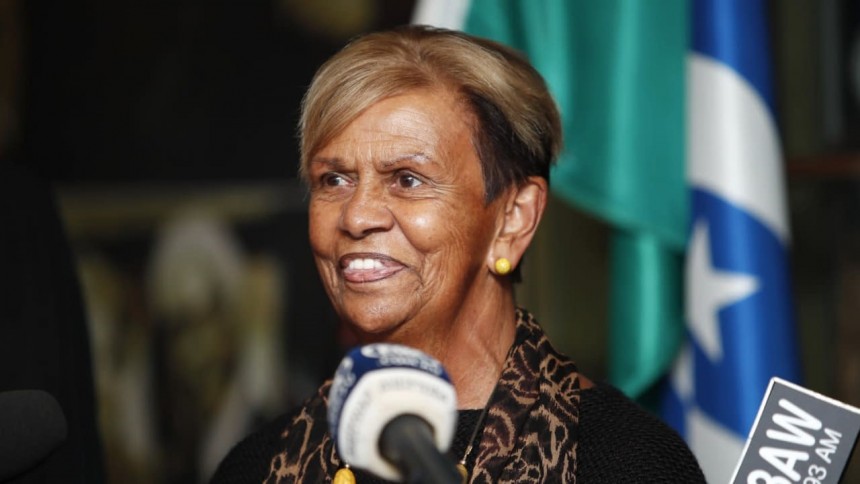
Her motto is, “If you can dream it, you can achieve it”.(photo – Shepparton News.com.au)
Gaye Ponting from our Ringwood office has seen Aunty Pam Pedersen speak at an International Women’s Day Dinner in Shire of Nillumbik where she resides and was inspired to share her story for Blak History Month.
Aunty Pam was born in 1943. She is the youngest daughter of Sir Doug and Lady Glynis Nicholls. She grew up in the suburbs of inner Melbourne city, Fitzroy and Northcote. She remembers her home being the heart for the community. She would often come home from school to a house full of people. Her parents were understanding, intuitive leaders and fighters for the rights and welfare of Aboriginal people.
Aunty Pam worked with Jesuit Social Services, a social change organisation, where she assisted young people and their families who had come in contact with the criminal justice system. She worked for this organisation in a capacity building role. In the past she has worked with the Victorian Department of Education, the Victorian Aboriginal Legal Service, the Attorney-General’s Department and the Victorian Aboriginal Family Violence Legal Prevention Service. For 22 years she was a valued staff member of the law firm Maurice Blackburn.
Aunty Pam is a dedicated Elder sitting on the Children’s Koorie Court, County Koorie Court, Melbourne Magistrates Court, Heidelberg Children’s Court and the Adult Parole Board of Victoria.
She began her involvement with the Koorie Court in 2004 and continues to make an outstanding contribution. She offers wise counsel to young people appearing in the court, generously sharing her own experiences and supporting young people to think about their behaviour, their position in the community and the importance of a law-abiding lifestyle.
In her words: ‘If I can help any of our young people, just to give them a good talking to so that they may stay out of trouble, it’s a bonus. And I’m there to try and do the best job that I can for our young ones and also the elder people as well.’
As a young woman Pam was involved in athletics, but it was later in life that she became serious about health and well-being through sporting activities. At 50 she decided to get active, initially for her own health but then as a way of getting the message out to community members that they needed to take care of their health through regular exercise, healthy diets and community and social interaction. From walking she progressed to fun runs and then to triathlons. She competed in many triathlons and running/walking/sailing events.
In 2005 she was the NAIDOC National Sportsperson of the Year. Her proudest sporting moment was to represent her people in the opening ceremony and baton relay for the 2006 Commonwealth Games in Melbourne.
Aunty Pam is always keen to promote the benefits of a healthy and active lifestyle. She is an ambassador for the Indigenous Marathon Foundation, a member of the Carlton Football Club Reconciliation Action Plan Advisory Group, a member of the AFL Dreamtime Working Group and on the board of The Long Walk.
Aunty Pam has received numerous awards over the years outside the sporting arena. These include an Australia Day Federal Award and ‘Koorie Women Mean Business’ awards in 1997, 2002 and 2004. Resources from – https://www.aboriginalvictoria.vic.gov.au/pamela-pedersen-nicholls
Pemulwuy – by Paulette Whitton
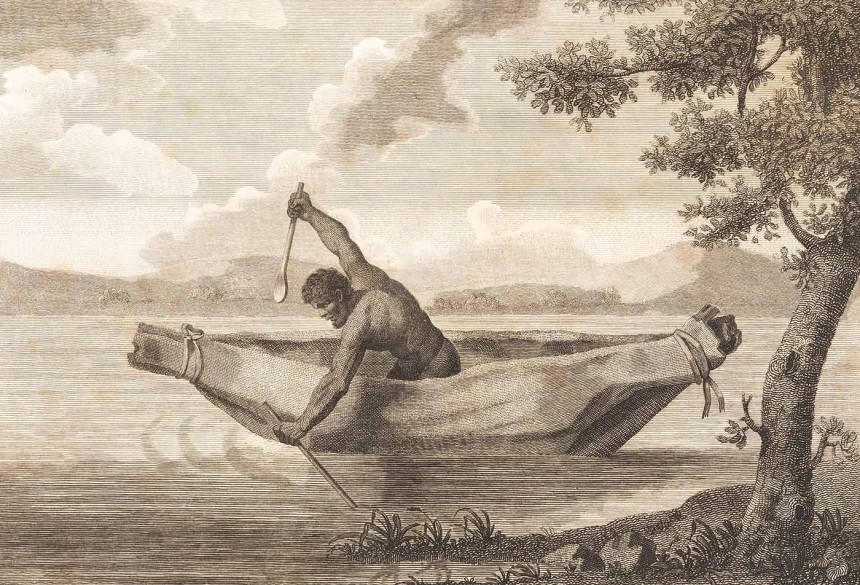
Pemulwuy is a Darug man who led the resistance against the colonisation of Sydney and is seen as a strong leader and hero among the Sydney Aboriginal community. He survived many conflicts with the British invaders but was beheaded in 1802 and his head sent over to England.
When Prince William visited Sydney in 2010, the Sydney Aboriginal community asked the Prince to help find and return Pemulwuy to his homelands. However, British officials have not been able to find Pemulwuy’s remains.
A western Sydney suburb was named in Pemulwuy’s honour despite some community opposition explaining colonisation is what he had fought against.
Here is more of Pemulwuy’s life story.
Sourced from the Australian Dictionary of BiographyPemulwuy (1750–1802) by J. L. Kohen
This article was published in Australian Dictionary of Biography, Supplementary Volume, (MUP), 2005Pemulwuy (c.1750–1802), Aboriginal warrior, was born near what was later named Botany Bay, on the northern side of the Georges River, New South Wales. His name (also spelt as Pemulwhy, Pemulwoy or other variations) was derived from the Darug (Dharug) word pemul, meaning earth. Europeans also rendered his name as ‘Bimblewove’ and ‘Bumbleway’. He spoke a dialect of the Darug language and had a blemish in his left eye. According to Colebe, his left foot had been clubbed, suggesting he was a carradhy (clever man). In December 1790 Pemulwuy speared John McIntyre, Governor Phillip’s gamekeeper, who later died of the wound. The spear was barbed with small pieces of red stone, confirming that Pemulwuy belonged to one of the ‘woods tribes’ or Bediagal (Bidjigal) clan. A bungled retaliatory expedition failed to find any Aborigines.
From 1792 Pemulwuy led raids on settlers at Prospect, Toongabbie, Georges River, Parramatta, Brickfield Hill and the Hawkesbury River. In December next year David Collins reported an attack by Aborigines who ‘were of the Hunter’s or Woodman’s tribe, people who seldom came among us, and who consequently were little known’. He also reported that ‘Pe-mul-wy, a wood native, and many strangers, came in’ to an initiation ceremony held at yoo-lahng (Farm Cove) on 25 January 1795. Collins thought him ‘a most active enemy to the settlers, plundering them of their property, and endangering their personal safety’. Raids were made for food, particularly corn, or as ‘payback’ for atrocities: Collins suggested that most of the attacks were the result of the settlers’ ‘own misconduct’, including the kidnapping of Aboriginal children.
To check at once ‘these dangerous depredators’, military force was used against Pemulwuy and his people. Captain Paterson directed that soldiers be sent from Parramatta, with instructions to destroy ‘as many as they could meet’ of the Bediagal. In March 1797 Pemulwuy led a raid on the government farm at Toongabbie. Settlers formed a punitive party and tracked him to the outskirts of Parramatta. He was wounded, receiving seven pieces of buckshot in his head and body. Extremely ill, he was taken to the hospital. Yet, late in April that year when the governor met several parties of natives near Botany Bay Pemulwuy was among them. Having ‘perfectly recovered from his wounds’, he had ‘escaped from the hospital with an iron about his leg. He saw and spoke with one of the gentlemen of the party; enquiring of him whether the governor was angry, and seemed pleased at being told that he was not’.
Pemulwuy’s close escapes resulted in the Darug believing that firearms could not kill him. In Collins’s words: ‘Through this fancied security, he was said to be at the head of every party that attacked the maize grounds’. On 1 May 1801 Governor King issued a government and general order that Aborigines near Parramatta, Georges River and Prospect could be shot on sight, and in November a proclamation outlawed Pemulwuy and offered a reward for his death or capture.
Pemulwuy was shot dead about 1 June 1802 by Henry Hacking. George Suttor described the subsequent events: ‘his head was cut off, which was, I believe, sent to England’. On 5 June King wrote to Sir Joseph Banks that although he regarded Pemulwuy as ‘a terrible pest to the colony, he was a brave and independent character’. He further wrote: ‘Understanding that the possession of a New Hollander’s head is among the desiderata, I have put it in spirits and forwarded it by the Speedy’. The head has not been found in an English repository to date.Pemulwuy’s son Tedbury (d.1810), known as Tjedboro, also threatened colonists. He became attached to John Macarthur, who allowed him to come and go at Elizabeth Farm. After Governor Bligh was placed under military arrest in 1808, Tedbury, armed with a bundle of spears, went to Macarthur’s cottage in Sydney and reportedly said that he had come to spear the governor. Next year he and Bundle attempted to rob a traveller on the Parramatta road, and he also took part in an attack on the farm of a settler at Georges River. In 1810 Tedbury was shot by Edward Luttrell at Parramatta, and died of his wounds. He had a wife and possibly a son Tommy Dadbury, who was living with the Wianamattagal clan at Penrith in 1837.
Historians argue about the nature and extent of Aboriginal resistance to European settlement of Australia, but if one person can be identified who clearly carried out armed warfare against the settlers of early Sydney it was Pemulwuy. He has become a heroic figure to Aborigines, and Eric Willmot published a novel about him in 1987.Above: Engraving by Samuel John Neele of James Grant’s image of ‘Pimbloy’, believed to be the only known depiction of Pemulwuy (sourced from National Museum Australia website)
William Barak: King of the Yarra
William Barak was born into the Wurundjeri clan of the Woi wurung people in 1823, in the area now known as Croydon, in Melbourne, and was educated at the Yarra Mission School in Narrm (Melbourne). Originally named Beruk Barak, he adopted the name William after joining the Native Police as a 19-year-old.
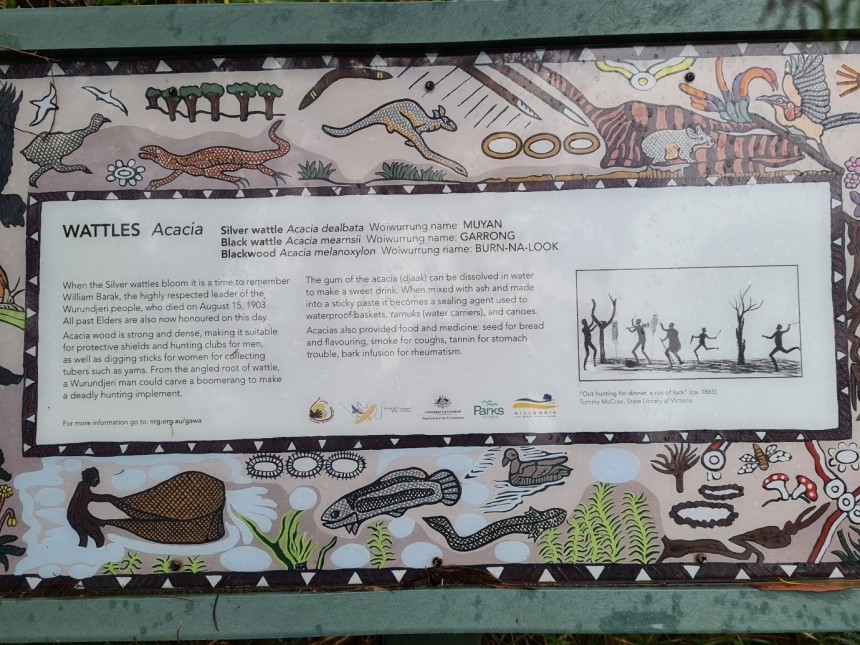
Interpretive sign at Gawa Wurndjeri Resource Trail, Watsons Creek (near Kangaroo Ground – Victoria (Photo by Gaye Ponting)
Leadership was in William Barak’s blood: his father Bebejan was a Ngurunggaeta (clan head) and his Uncle Billibellary, a signatory to John Batman’s 1835 “treaty”, became the Narrm (Melbourne) region’s most senior elder. As a boy, William Barak witnessed the signing of this document, which was to have grave and profound consequences for his people.
Known as energetic, charismatic and mild mannered, William Barak spent much of his life at Coranderrk Reserve, a self-sufficient Aboriginal farming community at Healesville. While at Coranderrk, William recorded Koorie culture through storytelling and art, and invited white settlers and dignitaries to visit the reserve.Skilled in the arts of diplomacy and friendship, over time he became a well-known figure and gained respect and fame within his own culture, in settler society and even abroad. William Barak campaigned to protect Coranderrk and walked many miles to Melbourne to raise his concerns with authorities. He worked to improve cross-cultural understanding and created many unique artworks and artefacts, some of which included paintings of Wurundjeri cultural ceremonies.
He was married twice and both his wives predeceased him. He had one son David and it broke his heart when David died at fourteen. He had a long life serving his people but he died in 1903, when the wattles bloomed in August.Resources – https://cv.vic.gov.au/stories/aboriginal-culture/william-barak/william-barak-king-of-the-yarra/CopyrightKoorie Heritage TrustA brief essay about William Barak drawn from the booklet William Barak – Bridge Builder of the Kulin by Gibb Wettenhall published by Aboriginal Affairs Victoria.Shirley W. Wiencke’s book ‘”When the Wattles Bloom”, about the life of William Barak.
Aunty Dot Peters (AM)
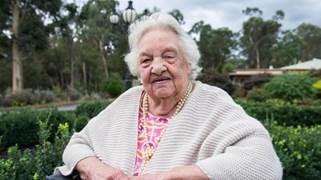
Aunty Dot Peters was born in 1930 in Melbourne and spent much of her childhood at Corranderrk Aboriginal Mission in Healesville, where she learned the traditional arts of weaving and basket coiling. Aunty Dot’s father Vincent fought in the Second World War.
He was captured and died a prisoner of war on the Thai Burma Railway. Unfortunately, her father’s sacrifice for his country went unacknowledged. Unlike the families of white soldiers, Aunty Dot’s family received no land, support or acknowledgment by the government. In 2006, after tirelessly campaigning for such recognition, Aunty Dot approached then Healesville RSL President Sam Halim who shared her vision of honoring the forgotten Aboriginal soldiers, and together they managed to hold the first-ever reconciliation ceremony at Healesville RSL.
During the ceremony, the Aboriginal flag was raised, and the didgeridoo was played during the ode. The following year, with the help of the Department of Premier and Cabinet and other organisations, the first Victorian Aboriginal Remembrance Service was held at the Shrine of Remembrance in Melbourne, which is now an annual event, and Aunty Dot served as Chairperson of the Victorian Aboriginal Remembrance Committee. Aunty Dot was a much-loved community member, educator dedicated her life to achieving change for her peoples.
Her work was acknowledged with many awards, including a NAIDOC Elders Award, Yarra Ranges Shire Lifetime Achievement Award, Victorian Aboriginal Award, the prestigious Red Ochre Award and, in 2001, a Centenary Medal. In 2011, Aunty Dot was inducted into the Victorian Honour Roll of Women and she is also on the Victorian Aboriginal Honour Roll.
https://www.aboriginalvictoria.vic.gov.au/dorothy-peters
Also a special award has been developed in Aunty Dot’s honour. It’s called the Aunty Dot Peters Award and supports Aboriginal and/or Torres Strait Islander students to complete years nine and ten at a Victorian Secondary School. Each year four students receive bursaries of $5000 each ($2500 per year over 2 years) to help them to complete years nine and ten at a Victorian Secondary School.
The award recognises Aunty Dot’s passion for education and works as an Aboriginal Educator at Healesville Primary School, from 1980 to 1991, teaching students about culture and showing them how to weave baskets. Of the award, Elder Aunty Dot Peters said, “It has been a longstanding dream of mine to get this award up and running.
As a former educator, I am proud to see an initiative like this that young Aboriginal people can strive for. I want all Aboriginal people to be true to themselves and to remember it’s important for Aboriginal and non-Aboriginal people to come together.” Stories sourced from vic.gov.au Aboriginal Victoria and Honouring the Black Diggers.
Joanne LaRocca, Team Leader at our Yarraville
BATTLE OF YERING
annecto’s Gaye Ponting, Case Manager at our Ringwood office, visited the Battle of Yering site at Yarra Glen, north east of Melbourne’s CBD. Gaye had never heard about this conflict that occurred in her region and she wanted to share it with a wider audience.
On 13 January 1840 a stand-off occurred on Yering Station located on the Melba Highway, Yarra Flats Billabongs at Yarra Glen in Victoria. The stand-off was between Wurundjeri men and Border Police and was possibly caused by a disagreement over a crop on Wurundjeri country.
Troopers of the Border Police led by Captain Henry Gisborne, who was Commissioner of Crown Lands, lured Jaga Jaga (Jacky-Jacky) and some of the Wurundjeri men to Yering station homestead where Jaga Jaga was captured and handcuffed. The other Wurundjeri men quickly retreated.
Wurundjeri men later approached the homestead with muskets and spears, whereupon Captain Gisborne and his troopers mounted a counterattack during which several shots were exchanged.
The Wurundjeri chose to retreat into the nearby billabongs. Having lured the troopers away as a diversion, other Wurundjeri warriors approached the homestead and freed Jaga Jaga.No white settlers or troopers were injured in the exchange, and injuries on the part of the Wurundjeri are unknown.
Captain Gisborne later wrote to Superintendent (later Governor) Charles La Trobe saying “I am unable to account for their never having hit us as they are capital marksmen”. There was no investigation of the incident initiated, no charges laid, and the incident was passed over.
Jaga Jaga, was also known as Bor-rer Bor-rer and was the nephew of Billibellary, a ngurungaeta (leader) of the Wurundjeri people. On 13 January 2007 at the Yarra Flats Billabongs, the Shire of Yarra Ranges with Murrundindi (Gary Hunter), ngurungaeta of the Wurundjeri people, unveiled a historical plaque and pictograph commemorating the Battle of Yering 167 years previously.
The plaques were organised by The Friends of the Yarra Flats Billabongs in conjunction with Yarra Ranges Friends in Reconciliation and Nillumbik Reconciliation Group.

Gaye Ponting, Case Manager Ringwood
